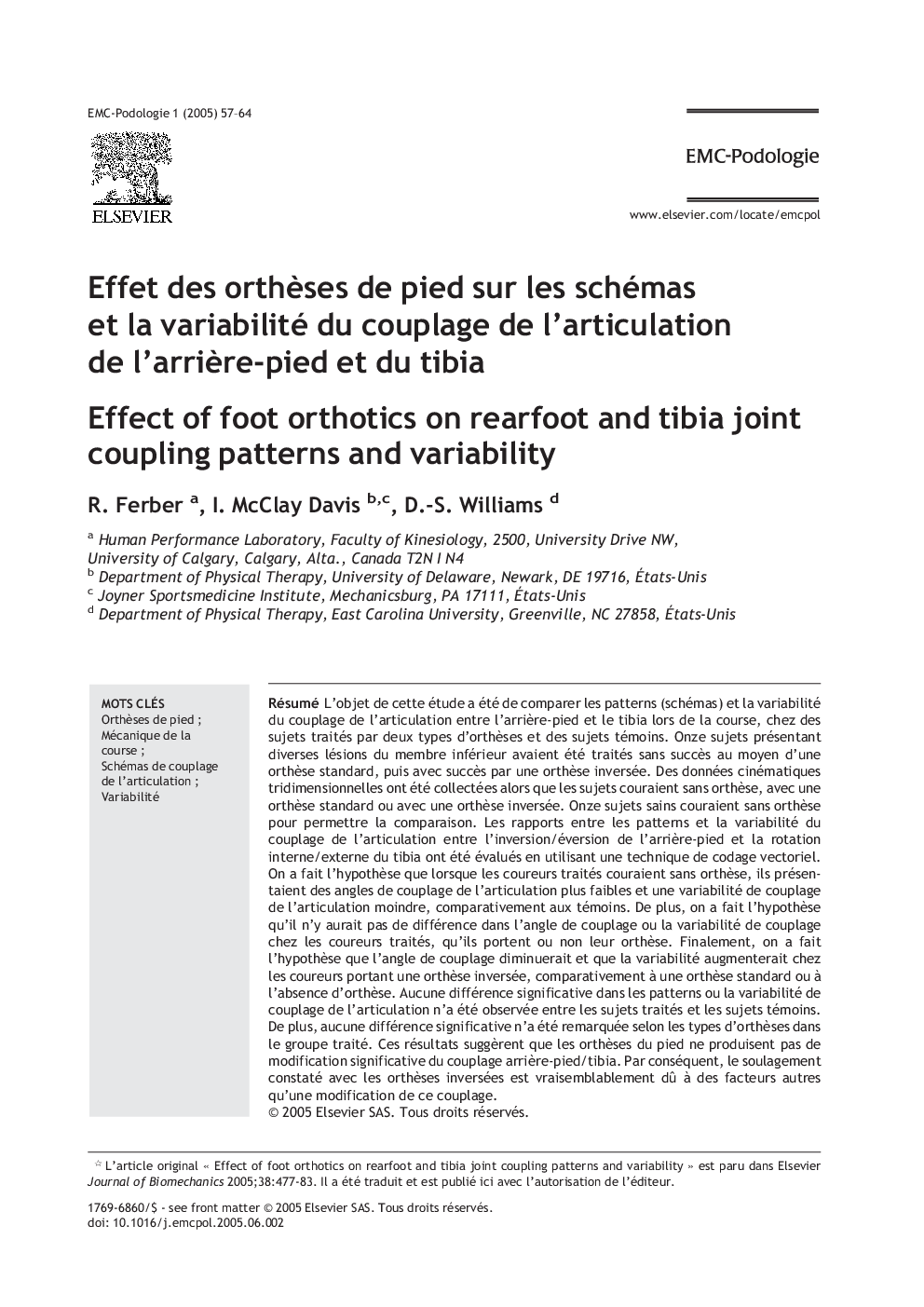| کد مقاله | کد نشریه | سال انتشار | مقاله انگلیسی | نسخه تمام متن |
|---|---|---|---|---|
| 9351893 | 1265409 | 2005 | 8 صفحه PDF | دانلود رایگان |
عنوان انگلیسی مقاله ISI
Effet des orthèses de pied sur les schémas et la variabilité du couplage de l'articulation de l'arrière-pied et du tibia
دانلود مقاله + سفارش ترجمه
دانلود مقاله ISI انگلیسی
رایگان برای ایرانیان
کلمات کلیدی
موضوعات مرتبط
علوم پزشکی و سلامت
پزشکی و دندانپزشکی
ارتوپدی، پزشکی ورزشی و توانبخشی
پیش نمایش صفحه اول مقاله

چکیده انگلیسی
The purpose of this study was to compare joint coupling patterns and variability of the rearfoot and tibia during running in subjects who were treated with two types of orthotic devices to that of controls. Eleven subjects with various lower extremity injuries were treated unsuccessfully with a standard orthotic, and then successfully with an inverted orthotic. Three-dimensional kinematic data were collected while subjects ran without orthoses and then in standard and inverted orthoses. Eleven healthy subjects ran without orthoses for comparison. The rearfoot inversion/eversion and tibial internal/external rotation joint coupling pattern and variability relationship was assessed using a vector coding technique. It was hypothesized that when the treated runners ran without orthotic devices, they would exhibit lower joint coupling angles and lower joint coupling variability compared to the controls. In addition, it was hypothesized that there would be no difference in the coupling angle or coupling variability between the standard and no orthotic conditions of the treated runners. Finally, it was hypothesized that coupling angle would decrease and variability would increase in the inverted versus the standard and non-orthotic conditions. No significant differences in joint coupling pattern or variability were observed between the treated and control subjects. In addition, no significant differences were noted between the orthotic conditions in the treated group. These results suggest that foot orthotic devices do not produce significant changes in rearfoot-tibial coupling. Therefore, the relief experienced with the inverted orthotic is likely due to factors other than alterations in this coupling.
ناشر
Database: Elsevier - ScienceDirect (ساینس دایرکت)
Journal: EMC - Podologie - Volume 1, Issue 3, September 2005, Pages 57-64
Journal: EMC - Podologie - Volume 1, Issue 3, September 2005, Pages 57-64
نویسندگان
R. Ferber, I. McClay Davis, D.-S. Williams,